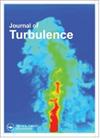基于LSTM和不同DMD方法的准地转湍流动力学代理非侵入降阶模型
IF 1.5
4区 工程技术
Q3 MECHANICS
引用次数: 0
摘要
摘要数学建模是用来研究现象和系统行为的。在各种工程领域,许多物理现象都是用一组微分方程来说明的。在许多实际应用中,数学模型非常复杂,高维系统的数值模拟具有挑战性。这些问题的例子是大规模的物理问题,如地球物理问题,它们具有很高的时间和空间变化。在这些问题中,模型阶数约简是实现适当近似的有效方法,因为它可以显著降低计算成本。深度学习最近被用于从数据中探索信息并做出预测。有几种降维方法。本文将动态模态分解(DMD)与长短期记忆(LSTM)网络相结合。这是因为LSTM可以预测非线性系统和时间序列数据。我们分别使用LSTM和DMD对非线性系统进行预测和降维。采用了四种常见的DMD降维方案。利用常用的地球物理数据集对所提方法的性能进行了评价。最后,我们比较了由快照投影和降阶模型得到的模态系数的变化。结果表明,该方法具有较高的精度。其中很重要的一点是算法实现的时间复杂度。当使用15种模式建模时,该方法的时间复杂度比使用所有特征建模时快10倍。关键词:模型阶数约简;长短期记忆(LSTM);动态模态分解(DMD);地球物理数据本文章由计算机程序翻译,如有差异,请以英文原文为准。
A surrogate non-intrusive reduced order model of quasi-geostrophic turbulence dynamics based on a combination of LSTM and different approaches of DMD
AbstractMathematical modeling is applied to study phenomena and system behavior.In various engineering fields, many physical phenomena are illustrated using a set of differential equations.In many real-world applications, the mathematical models are very complex, and numerical simulations in high-dimensional systems are challenging.Examples of these problems are large-scale physical problems such as geophysical, which have high temporal and spatial variations.In these problems, model order reduction is a useful method for achieving an appropriate approximation because it can significantly decrease computational costs.Deep learning has recently been used to explore information from data and make predictions.There are several methods for dimensionality reduction.In this paper, we combine the dynamic mode decomposition (DMD) and the long short-term memory (LSTM) network.This is because LSTM can predict nonlinear systems and time series data.We use LSTM and DMD to predict nonlinear systems and reduce dimensions, respectively.Four common DMD schemes have been applied for dimensionality reduction.The common geophysical dataset has been used to evaluate the performance of the proposed method.Finally, we compare the variations of the modal coefficients which are obtained from snapshots projection and the reduced-order model.These results show the high accuracy of our proposed method.One of the things that is important is the time complexity of algorithm implementation.The time complexity of the proposed method is 10 times faster when 15 modes are used for modeling than when all features are used.KEYWORDS: Model order reductionlong short-term memory (LSTM)dynamic mode decomposition (DMD)geophysical data Disclosure statementNo potential conflict of interest was reported by the author(s).
求助全文
通过发布文献求助,成功后即可免费获取论文全文。
去求助
来源期刊

Journal of Turbulence
物理-力学
CiteScore
3.90
自引率
5.30%
发文量
23
审稿时长
6-12 weeks
期刊介绍:
Turbulence is a physical phenomenon occurring in most fluid flows, and is a major research topic at the cutting edge of science and technology. Journal of Turbulence ( JoT) is a digital forum for disseminating new theoretical, numerical and experimental knowledge aimed at understanding, predicting and controlling fluid turbulence.
JoT provides a common venue for communicating advances of fundamental and applied character across the many disciplines in which turbulence plays a vital role. Examples include turbulence arising in engineering fluid dynamics (aerodynamics and hydrodynamics, particulate and multi-phase flows, acoustics, hydraulics, combustion, aeroelasticity, transitional flows, turbo-machinery, heat transfer), geophysical fluid dynamics (environmental flows, oceanography, meteorology), in physics (magnetohydrodynamics and fusion, astrophysics, cryogenic and quantum fluids), and mathematics (turbulence from PDE’s, model systems). The multimedia capabilities offered by this electronic journal (including free colour images and video movies), provide a unique opportunity for disseminating turbulence research in visually impressive ways.
 求助内容:
求助内容: 应助结果提醒方式:
应助结果提醒方式:


